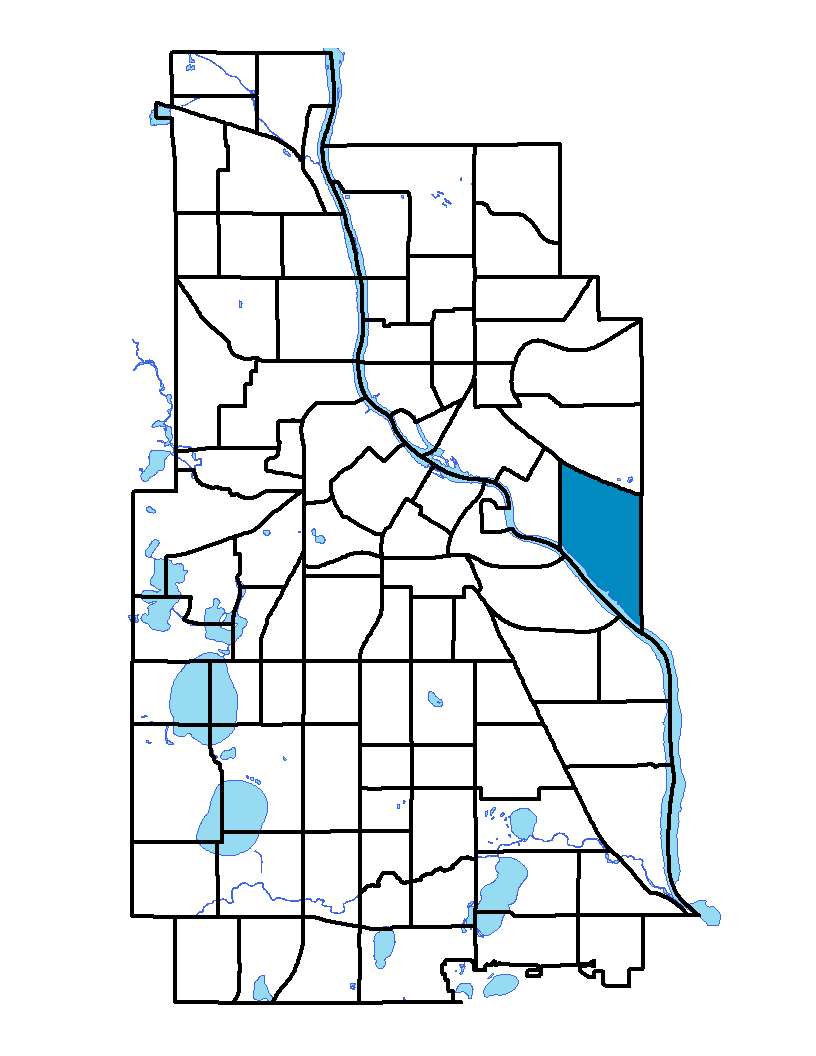Prospect Park is located in east central Minneapolis. The neighborhood borders the City of Saint Paul on the eastern side and the University of Minnesota to the west. It is bound on the south by the Mississippi River and on the north by the railroad tracks and the SE industrial area. The neighborhood was platted as the Prospect Park subdivision in 1885 by developer Louis Menage. In the late 19th century, Prospect Park was a Minneapolis suburb connected to the city by a streetcar line. The neighborhood's steep hills, curving streets, and the Witch's Hat water tower, built in 1913, all give it a strong sense of place. Nearby shopping, recreation, and frequent community events add to the urban-village community feel of Prospect Park.
To learn more about the neighborhood association visit: www.pperr.org
Indicator Details
|
Indicators |
Primary Domain | Indicator Value | Rank | Tier |
|---|---|---|---|---|
| Access to Mainstream Financial Services | Economic Health | 22.6% | 40 | Middle |
| Access to Parks and Open Space | Natural Areas | 8.2% | 33 | Middle |
| Adult Educational Attainment | Educational Opportunities | 88.9% | 48 | Middle |
| Age of Housing | Housing | 60.8% | 8 | Top |
| Blood Lead Levels in Children | Housing | 1.1% | 8 | Top |
| Business Retention | Economic Health | -7.3% | 84 | Bottom |
| Chronic School Absence | Health Systems and Public Safety | 73.8% | 43 | Middle |
| Commute Mode Share | Transportation | 53.9% | 5 | Top |
| Employment Rate | Employment Opportunities | 48.8% | 78 | Bottom |
| Excessive Housing Cost Burden | Housing | 44.9% | 74 | Bottom |
| Food Desert | Neighborhood Characteristics | 50.0% | 11 | Top |
| High School Graduation Rate | Educational Opportunities | -% | - | Data N/A |
| Household Transportation Costs | Transportation | 15.3% | 22 | Top |
| Local Business Vitality | Economic Health | 43.3% | 83 | Bottom |
| Long-Term Unemployment | Employment Opportunities | 6.7% | 57 | Middle |
| Low Birth Weight | Health Systems and Public Safety | 4.0% | 13 | Top |
| Motor Vehicle Collisions | Health Systems and Public Safety | 4.5 | 34 | Middle |
| Offsite Alcohol Outlets | Neighborhood Characteristics | 2.5 | 70 | Bottom |
| Pedestrian Connectivity | Transportation | 217.1 | 8 | Top |
| Preschool Enrollment | Educational Opportunities | 100.0% | 1 | Top |
| Preventable Hospitalizations | Health Systems and Public Safety | 3.3 | 54 | Middle |
| Proximity to Brownfield Sites | Environmental Hazards | 38.8% | 86 | Bottom |
| Proximity to Superfund Sites | Environmental Hazards | 84.7% | 78 | Bottom |
| Public Assisted Households | Employment Opportunities | 16.7% | 40 | Middle |
| Reading Proficiency | Educational Opportunities | 50.0% | 11 | Top |
| Residential Mobility | Social Cohesion | 41.7% | 86 | Bottom |
| Residential Proximity to Traffic | Environmental Hazards | 37.8% | 78 | Bottom |
| School Proximity to Traffic | Environmental Hazards | 33.3% | 52 | Middle |
| School Readiness Scores | Educational Opportunities | -% | - | Data N/A |
| Toxic Releases from Facilities | Environmental Hazards | 6.1% | 50 | Middle |
| Transit Accessibility | Transportation | 417.1 | 25 | Top |
| Travel Time to Work | Employment Opportunities | 17.7 minutes | 1 | Top |
| Tree Cover | Natural Areas | 34.9% | 12 | Top |
| Vacancy Rates | Housing | 12.8% | 71 | Bottom |
| Violent Crime | Health Systems and Public Safety | 32.9 | 20 | Top |
| Voter Participation | Social Cohesion | 15.4% | 75 | Bottom |
| Walkability | Neighborhood Characteristics | 67 | 33 | Middle |

